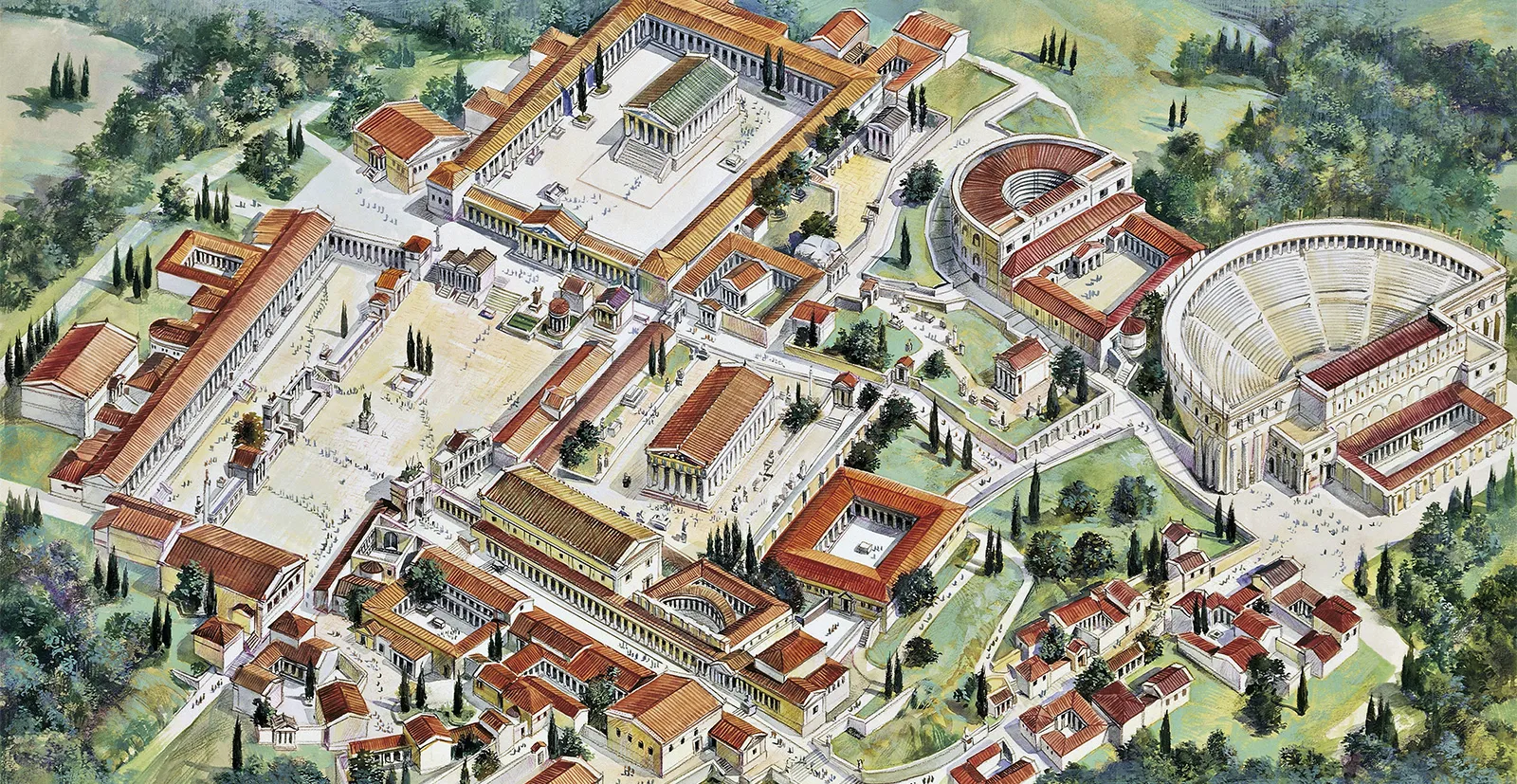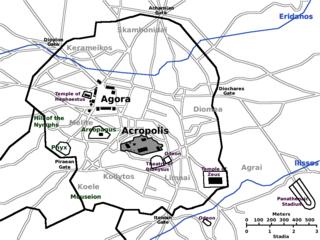A Typical City in Ancient Greece
Learn about a typical Greek city from Ancient Greece, including the agora, acropolis, houses, theater, temples, streets, walls, outside the town, and facts.

A Typical City in Ancient Greece
Every ancient Greek city had its own distinct characteristics and structures, but they also shared a great deal in common. Later times in Ancient Greece saw the development of grid systems for new towns, with streets and homes oriented to maximize the benefits of the sun, wind, and surrounding landscape. Numerous Greek towns were situated close to the Mediterranean shore.
Agora
The agora served as the hub of activity in every Greek city. The town’s marketplace and gathering spot was the agora, a huge open space. There were long, open-air structures called stoas with stores at the rear all around the agora. Here, the city’s residents would congregate to trade commodities, hear speeches, and talk politics.
Acropolis
Acropolis, a hill or high point in the town, is a common feature of large towns. In the event that the city was attacked, this sector would be the last line of defense.
Temples
Temples dedicated to the gods were frequently found at the Acropolis and all around the agora. Most cities were devoted to a single god, known as their patron god. They would dedicate a sizable space and a shrine to their patron deity. Athena for Athens, Ares and Artimis for Sparta, Zeus for Olympia, and Poseidon for Corinth are a few examples of patron gods.
Theater
Many Greek cities had a large open-air theater where plays were held during festivals. Greek theater was a popular form of entertainment. Some theaters were large enough to hold over 10,000 people.
Stadium
The Greeks also enjoyed sporting events and contests. They built large stadiums (called the stadion) and had gymnasiums. The hippodrome was a stadium designed to hold chariot races.
Houses
Some areas of the city were designated for housing. In some towns the housing was planned such that the soldiers lived in one area, the craftsmen in another, and the farmers in another area. Greek homes were plain and closed off from the outside, but were quite open on the inside and centered around a large courtyard.
Walls and Defense
Surrounding the city would be a tall stone wall to provide defense against invaders. Sometimes the walls extended down to the city’s sea port in order to allow for new supplies to enter the city during a siege.
Outside the Town
The dead were not buried inside the town. Typically a cemetery was located somewhere down the road outside the town. Some towns also had a special sanctuary nearby. The sanctuary was a place dedicated to a god where the sick could go to be healed and people would go to hear prophesies about their future.
Facts About a Typical Town of Ancient Greece
- Elected officials would hold meetings in the council house (called the bouleterion) located near the agora.
- The name for the city-state in Ancient Greece was the “polis.”
- The Greek architect Hippodamos is sometimes called the “father” of city planning.
- Many cities had a mint in the agora where they made their own coins.
Read also: Daily Life in Ancient Greece
 The First Encyclopedia Your First Knowledge Home
The First Encyclopedia Your First Knowledge Home
